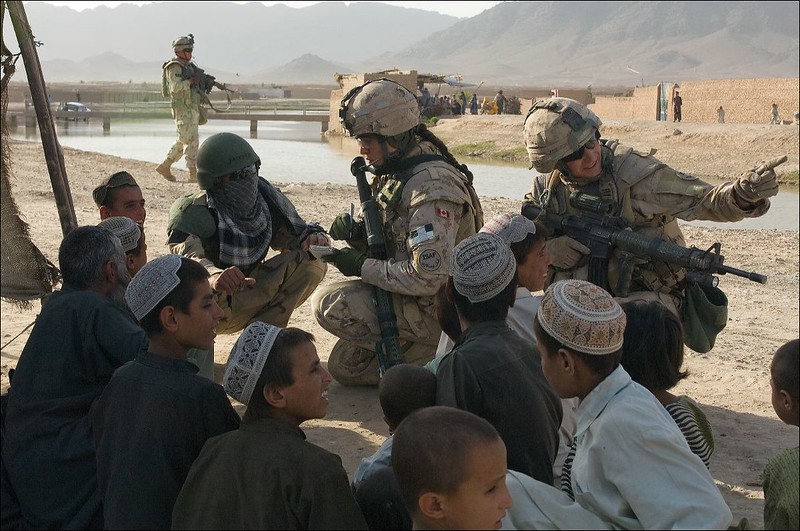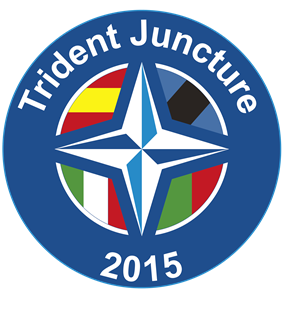In recent weeks, the federal government’s controversial response to the plight of Afghan interpreters who aided the Canadian Armed Forces (CAF) has grabbed headlines. But this is only the latest—and perhaps final—crisis involving Canada’s language translation and support work in Afghanistan. From the war’s outset, the CAF and the Department of National Defence (DND) struggled to marshal sufficient resources for training and interpretation in Pashto (or Pashtu) and Dari—Afghanistan’s two principal languages. Understanding this omission affords critical insights on the state of Canada’s language infrastructure.
Throughout the conflict in Afghanistan, the CAF produced few Pashto and Dari linguists. Unlike the U.S. Department of Defense, whose renowned Defense Language Institute has trained scores in Pashto, Dari, Mandarin, Russian, Farsi, Arabic, and dozens of other so-called “critical languages,” enrolment figures at comparable CAF institutions have been shockingly low. A report detailing some of the 2004 activities of the Canadian Forces Language School (CFLS), which serves as the CAF’s foreign language-learning hub, revealed paltry enrolments in Mandarin (4 students), Russian (21 students), Farsi (6 students), and all dialects of Arabic (7 students). Neither Pashto nor Dari appeared on the list. By 2006, Pashto—not Dari—had entered CFLS’ offerings. In fact, “the greatest effort was invested into the development of the Pashtu curriculum.” But the number of students in Pashto (13), along with Mandarin (2), Russian (9), Farsi (7), and all dialects of Arabic (2), remained woefully small. A later pilot project in which select CAF members studied Pashto and Dari through privately developed software could not adequately compensate for earlier training gaps.
This anaemic training program had two effects on the CAF. First, many Canadian troops lacked meaningful Pashto and Dari language-learning opportunities. Those who wanted to become conversant in these languages had to pursue self-study. Second, although the CAF solicited the assistance of Pashto and Dari speakers from within the ranks, the paucity of in-service linguists meant that DND turned to contractors. DND not only enlisted Afghans abroad, but also Afghan-Canadians at home. Some came through direct appeals. Other Afghan-Canadians joined the war effort through an unspecified “private company” (perhaps Ottawa-based Valcom), which launched its DND-backed recruiting initiatives in 2005.
Whether recruited in Canada or Afghanistan, the contractor program proved far from an unqualified success in operational and human terms. To begin, demand evidently outpaced supply. While precise figures remain elusive, one 2019 article noted “65 former language and cultural advisers.” This hardly seems adequate for “the largest Canadian combat operation since the Korean War.” Indeed, one exasperated intelligence officer reported “all military translation in Afghanistan, even of unclassified Afghan documents, has often ‘bottlenecked’ through a few local interpreters.” The Canadian-sourced interpreters’ bona fides also elicited controversy. Although vetted and briefly trained at CFLS prior to deployment, alarming accusations about contractors—linguistic misunderstandings arising from under-qualified interpreters had resulted in false arrests—surfaced in 2009. DND’s apparent disregard for the post-deployment welfare of these contractors further tarnished the program.
Why did the CAF have underdeveloped language training and resort to an over-reliance on overworked and under-supported contractors? In part, this situation had developed as a by-product of the Official Languages Act (OLA). In keeping with the OLA, the CAF aspires to “linguistic duality.” This has made English-French bilingualism an institutional objective, particularly in educational contexts. One Canadian Defence Academy (CDA) document states: “The primary language education and training challenge facing the Canadian Forces is compliance with the Official Languages Act.”
While essential for integrating and sustaining a bilingual force, this commitment to joint English and French proficiency requires tremendous financial outlays. Translating defence materials between official languages consumed over $12 million in 2008-2009. And government-wide inducements for bilinguals—$800 annually per qualifying individual—added to this cost. So, too, does training. Inculcating B-level proficiency in a Regular Force Captain could cost as much as $40,675 in salary remitted during a full-time, six-month training period.
In contrast, CDA, which oversees CFLS, allocates a detrimentally small amount of capital to foreign language instruction. On average, CFLS accounted for $11.5 million, or just 2.7 percent, of CDA expenditures from 2008 to 2013. Given the expense of language instruction, this necessarily limits CFLS’ enrolments. During the 2006 calendar year, only 88 individuals (excluding foreign military personnel studying English or French in conjunction with the Military Training Assistance Program) profited from foreign language classes at CFLS. Conversely, in the 2005-2006 fiscal year over 30 times that number (at least 2,777 individuals) participated in various official language training initiatives across the CAF.
Compounding matters, the country’s diversity, including its linguistic bounty, remains an under-utilized resource in the CAF. The last tabulated census (2016) indicated that over 7 million individuals spoke “an immigrant mother tongue,” including a large and growing number fluent in strategic languages like Arabic, Farsi, Mandarin, and Russian. Moreover, the majority of these individuals also had proficiency in an official language. According to the census, “7 in 10 people with a mother tongue other than English or French spoke one of these languages at home.” To be sure, the CAF and DND value and work toward boosting “linguistic diversity.” But the absence of foreign-language enticements, most notably bonuses available to English-French bilinguals, creates conditions unfavourable to this aim.
The problem extends beyond the CAF. Educational policies disconnected from strategic realities have aggravated the foreign language deficit among primary and secondary students, which in the long term shrinks the CAF’s potential recruiting base. For instance, an Ontario prohibition on teaching anything but French or English within school hours relegates foreign languages to after-school and weekend instruction.
Universities have likewise done a substandard job of encouraging students to pursue foreign languages, especially those crucial to CAF operations in Afghanistan. Currently, no Canadian university offers Pashto courses. The same holds true of Dari, though a number of institutions—University of British Columbia, University of Toronto, University of McGill—have programs in Farsi, a related dialect. This helps to explain the marked post-secondary enrolment asymmetries between Western and non-Western languages captured in 2018 data.
With the war in Afghanistan over, Pashto and Dari’s utility to Ottawa has declined. But the difficulties that inadequate training in these languages posed to the CAF offer important lessons for the future. If Canada does not invest more in its strategic language infrastructure, including expanded training, recruitment, and educational opportunities, the same struggles that beset the CAF’s mission in Afghanistan will likely recur.
Photo: Canadian Sgt. Maranda Robertson and Canadian Capt. Mike Soley, Kandahar Provincial Reconstruction Team, talk with local children Kandahar via a ISAF translator (2008), by ResoluteSupportMedia via Flickr. Licensed under CC BY 2.0.
Disclaimer: Any views or opinions expressed in articles are solely those of the authors and do not necessarily represent the views of the NATO Association of Canada.




